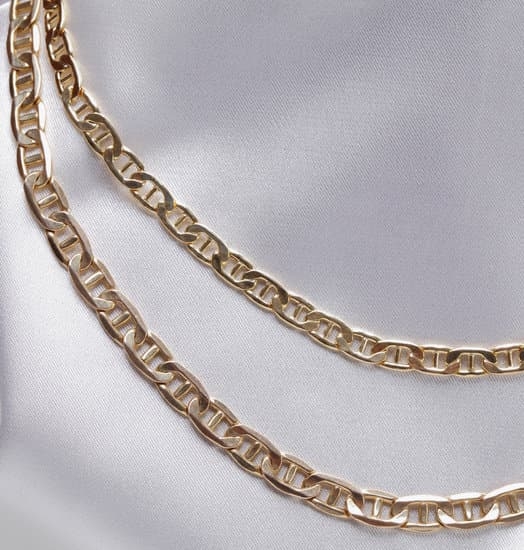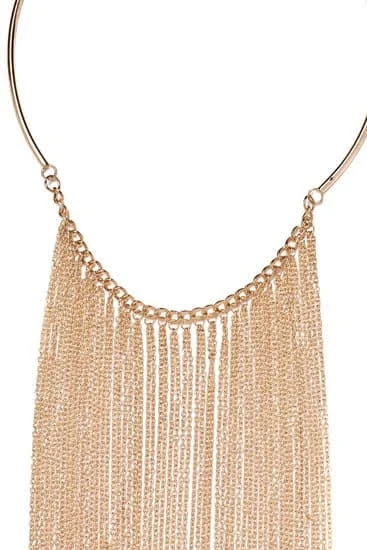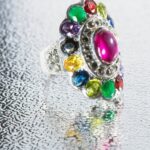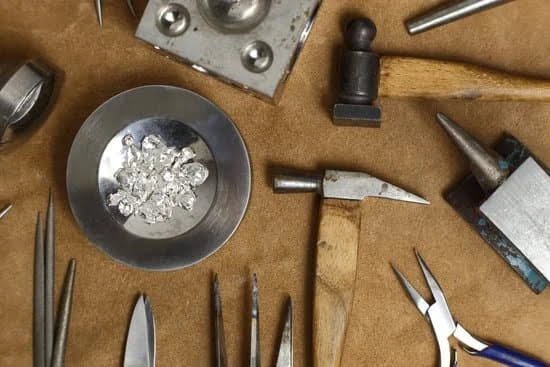Gold plated jewelry has long been a popular choice for those seeking elegance and a touch of luxury. However, many people wonder if this type of jewelry is prone to tarnishing over time. In this introductory section, we will explore what gold plated jewelry is, how it is achieved, and delve into the allure that makes it so desirable.
To begin with, gold plated jewelry consists of a base metal that is covered with a layer of gold. This layer can range in thickness, but generally speaking, it is quite thin compared to other types of gold jewelry. The gold plating process involves bonding the gold layer onto the base metal through various techniques such as electroplating or chemical bonding.
The allure of gold plated jewelry lies in its ability to mimic the appearance of solid gold at a fraction of the cost. It allows individuals to enjoy the glamour and sophistication associated with gold without breaking the bank. As we embark on this exploration of gold plated jewelry, keep in mind its nature as an affordable alternative that offers style without compromising on quality or aesthetics.
Exploring the Composition of Gold Plated Jewelry
Gold plated jewelry is a type of jewelry that features a thin layer of gold on top of a base metal. The composition of gold plated jewelry plays a significant role in its overall quality and durability.
The base metal used in gold plating can vary, but common options include copper, silver, brass, or stainless steel. The choice of base metal often depends on factors such as cost and desired appearance. Copper is commonly used as it provides a good substrate for the gold plating process and enhances the warmth of the gold color.
Another important aspect to consider when examining the composition of gold plated jewelry is the thickness of the gold layer. Gold thickness is measured in microns (µm) and refers to the amount of gold applied during the plating process. Thicker layers generally offer better resistance to tarnishing and longer-lasting durability.
Different types of gold plating techniques are employed to achieve varying levels of quality and longevity. One commonly used technique is electroplating, which involves depositing a layer of gold onto the base metal through an electrolytic bath. This method allows for precise control over the plating thickness and results in a more durable finish compared to other techniques.
It’s important for consumers to be aware of these factors when purchasing gold plated jewelry as they can impact both the initial appearance and how long the jewelry will last before showing signs of tarnishing or wear.
| Base Metal | Gold Thickness | Techniques |
|---|---|---|
| Copper | Varies depending on manufacturer | Electroplating, electroless plating |
| Silver | Varies depending on manufacturer | Electroplating, flash plating |
| Brass | Varies depending on manufacturer | Electroplating, immersion plating |
| Stainless Steel | Varies depending on manufacturer | Vacuum deposition, ion plating |
The Tarnishing Phenomenon
Gold plated jewelry, despite its lustrous appearance, is not immune to tarnishing. Understanding why gold plated jewelry tarnishes is crucial in order to properly care for and maintain these pieces. There are several external factors that contribute to the tarnishing phenomenon.
One major factor is exposure to moisture. When gold plated jewelry comes into contact with water or excessive humidity, it can accelerate the oxidation process, leading to tarnish. Additionally, sweat and chemicals such as perfumes, lotions, and cleaning products can also cause the gold plating to deteriorate and tarnish over time.
Another contributing factor is the natural oils on our skin. The oils produced by our bodies can react with the metal alloys used in gold plated jewelry, causing them to oxidize and tarnish. This is especially true for individuals with higher pH levels in their skin.
pH levels also play a significant role in the tarnishing of gold plated jewelry. Higher acidity levels in one’s body chemistry can lead to faster tarnishing of gold plating. It is important to note that everyone’s body chemistry is unique, so some individuals may experience more rapid tarnishing than others.
How Long Can You Expect Gold Plated Jewelry to Last?
Gold plated jewelry offers a beautiful and affordable option for those who want the look and feel of gold without the high price tag. However, one common concern people have when considering gold plated jewelry is how long it will last before it starts to tarnish.
The lifespan of gold plated jewelry can vary depending on several factors. One important factor is the thickness of the gold plating. Generally, the thicker the layer of gold, the longer the jewelry will resist tarnishing. Gold plating is measured in microns, with higher micron levels indicating a thicker layer of gold.
In addition to the thickness of the gold plating, how you care for and maintain your gold plated jewelry also plays a significant role in its longevity. Avoid exposing it to moisture, sweat, chemicals, and other external factors that can accelerate tarnishing. When not wearing your jewelry, store it properly in a dry place away from direct sunlight and abrasive materials.
To help extend the lifespan of your gold plated jewelry, there are some simple care tips you can follow:
- Avoid wearing it while swimming or showering.
- Remove it before applying lotions, perfumes, or any other products that may contain chemicals.
- Clean it regularly using mild soap and warm water, gently scrubbing with a soft brush to remove dirt or oils.
- Polish it with a soft cloth to restore its shine.
Despite taking proper care of your gold plated jewelry, signs of wear and tear may eventually become noticeable over time. The thin layer of gold may start to wear off in areas that experience frequent friction or rubbing against surfaces. It’s important to be realistic about the lifespan of gold plated jewelry and be prepared for eventual tarnishing.
While some people prefer to replace their gold plated jewelry when signs of wear become visible, others appreciate the evolving character that comes with patina and choose to continue wearing their pieces as they are. Ultimately, how long you can expect your gold plated jewelry to last will depend on how well you care for it and how much wear it receives.
Debunking Myths
Gold plated jewelry, like any other type of jewelry, is not immune to tarnishing. However, there are some misconceptions surrounding gold plated jewelry and its tendency to tarnish. In this section, we will address these myths and provide realistic expectations for gold plated jewelry.
Addressing Misconceptions
One common myth about gold plated jewelry is that it will always tarnish quickly and therefore have a short lifespan. While it is true that gold plating does eventually wear off, the speed at which it tarnishes depends on various factors such as the thickness of the gold layer, the base metal used, and how well the jewelry is cared for.
Examples of Gold Plated Jewelry that Resist Tarnishing
It is important to note that not all gold plated jewelry will tarnish at the same rate. Some manufacturers apply a thicker layer of gold during the plating process, which can increase the longevity of the piece before significant signs of wear appear. Additionally, certain types of base metals used in gold plating can be more resistant to tarnishing than others.
Furthermore, advancements in technology and manufacturing techniques have resulted in specialized coatings or treatments that can enhance the durability and resistance of gold plated jewelry against tarnishing. For example, some manufacturers may use a protective clear coat or apply an additional layer of anti-tarnish coating to prolong the life of their gold-plated pieces.
Realistic Expectations and Best Practices
While it is possible to find high-quality gold plated jewelry that resists tarnishing for a longer period, it is essential to understand that all gold plated items will eventually show signs of wear over time. To help extend their lifespan, it is recommended to follow proper care practices such as avoiding exposure to moisture or harsh chemicals, removing jewelry before swimming or showering, and gently cleaning and storing them when not in use.
By debunking myths and setting realistic expectations, we can help readers understand that gold plated jewelry is not destined to tarnish quickly but rather requires proper care and maintenance to preserve its appearance. Individuals who choose gold plated jewelry should be aware of these factors, take necessary precautions, and embrace the beauty and affordability it offers.
Cleaning and Storing Your Gold Plated Jewelry
Cleaning and storing gold plated jewelry properly is crucial in maintaining its luster and preventing tarnishing. Here are some safe cleaning techniques, recommended products, and storage practices to help you keep your gold plated jewelry looking its best:
Safe Cleaning Techniques
- Use a soft, lint-free cloth or a microfiber cloth to gently wipe the surface of your gold plated jewelry. This will remove any dirt, dust, or oils that may have accumulated.
- Avoid using harsh chemicals, abrasive cleaners, or rough materials when cleaning as these can damage the delicate gold plating.
- If necessary, you can use mild soap and warm water to clean your gold plated jewelry. Simply create a soapy solution, dip a soft cloth into it, and gently rub the jewelry. Rinse with clean water and pat dry with a soft cloth.
Recommended Cleaning Products
- There are specific jewelry cleaning solutions available that are formulated specifically for cleaning gold plated jewelry. These products are gentle yet effective in removing tarnish and restoring shine.
- Alternatively, you can find specialized gold polishing cloths designed for gold plated jewelry. These cloths are impregnated with polishing compounds that safely remove tarnish without damaging the plating.
Appropriate Storage Practices
- Store your gold plated jewelry in individual pouches or lined compartments within a jewelry box to prevent scratching or tangling.
- Keep your jewelry away from direct sunlight or heat sources as these can cause discoloration or fading of the plating.
- Avoid exposing your gold plated jewelry to moisture or humidity as it can accelerate tarnishing. Consider using silica gel packets in your storage area to absorb excess moisture.
By following these cleaning and storing practices, you can extend the lifespan of your gold plated jewelry and keep it looking radiant for longer periods. Regular maintenance is key to preventing tarnishing and ensuring its longevity. Remember to handle your gold plated jewelry with care and avoid unnecessary exposure to harsh environments or chemicals.
Alternative Options
Gold plated jewelry offers an affordable option for those who want to enjoy the appearance of gold without breaking the bank. However, if you’re looking for alternatives that are less prone to tarnishing, you may want to consider gold vermeil or solid gold jewelry.
Exploring Gold Vermeil
Gold vermeil is a type of jewelry made by layering a thick coat of gold over sterling silver. To be considered vermeil, the gold layer must have a minimum thickness of 2.5 microns and be at least 10 karats. The thicker layer of gold in vermeil makes it more resistant to tarnishing compared to gold plated jewelry, which typically has a thinner gold coating.
One advantage of choosing gold vermeil is its durability. With proper care, this type of jewelry can last for a long time without losing its shine. However, it’s important to note that like all types of jewelry, regular maintenance and cleaning are still necessary to preserve its appearance.
Opting for Solid Gold Jewelry
If you’re looking for the ultimate investment in quality and longevity, solid gold jewelry is your best bet. Unlike gold plated or vermeil options, solid gold jewelry is made entirely from one type of metal – usually 24 karat pure gold or alloys with higher karatage such as 22k or 18k. These metals are naturally resistant to tarnish due to their high purity.
Solid gold jewelry may be more expensive than other options discussed in this article; however, it offers unparalleled value and beauty that lasts a lifetime. It’s worth considering if you’re willing to make a larger initial investment and prioritize owning genuine precious metals.
Final Thoughts
In conclusion, the choice of whether to invest in gold plated jewelry ultimately rests in the hands of the consumer. While it is true that gold plated jewelry will tarnish over time due to various external factors, there are steps that can be taken to prolong its lifespan and minimize tarnishing.
By understanding the composition of gold plated jewelry, being aware of proper care and maintenance techniques, and recognizing the limitations of this type of jewelry, individuals can make a decision that suits their personal preferences and budget.
It is important to keep in mind that proper care and maintenance play a crucial role in extending the life of gold plated jewelry. By avoiding exposure to moisture, sweat, chemicals, and excessive natural oils on the skin, individuals can prevent or mitigate tarnishing. Additionally, regular cleaning using safe techniques and appropriate cleaning products can help remove any existing tarnish and restore the brilliance of the jewelry.
For those who desire an alternative to gold plated jewelry, options such as gold vermeil or solid gold may be worth exploring. Both choices offer their own advantages and disadvantages when it comes to tarnishing. Gold vermeil provides a thicker layer of gold compared to gold plating and may therefore offer enhanced durability against tarnishing.
Solid gold, on the other hand, does not contain base metals that may cause allergic reactions for some individuals. However, it is important to note that both options come at a higher price point than gold plated jewelry.
Frequently Asked Questions
How long does gold-plated jewelry last?
The lifespan of gold-plated jewelry can vary depending on several factors including the quality of the plating, the frequency of wear, and how well it is cared for. Generally, gold-plated jewelry tends to last for about one to two years with regular usage.
However, it is important to note that the gold plating can gradually wear off over time due to factors such as exposure to sweat, chemicals, and friction. To ensure the longevity of your gold-plated jewelry, it is recommended to handle it with care, avoid contact with harsh substances, and store it properly when not in use.
Is it OK to shower with gold-plated jewelry?
While it may be tempting to wear gold-plated jewelry in the shower since it adds a touch of luxury, doing so is not recommended. Showering with gold-plated jewelry can accelerate the wearing off of the gold plating due to exposure to water, soap residue, and heat from hot showers.
These elements can gradually erode the thin layer of gold on top of the base metal causing discoloration or even tarnishing. It is best practice to remove your gold-plated jewelry before showering or bathing in order to maintain its appearance and longevity.
Is gold-plated jewelry good for everyday wear?
Gold-plated jewelry can be suitable for everyday wear depending on personal preferences and lifestyle choices. Due to its relatively affordable price compared to solid gold pieces, many individuals choose gold-plated jewelry as a stylish option for daily accessorizing.
However, it is essential to consider that regular wear and tear from daily activities such as exposure to sweat, chemicals from skincare products or lotions, and friction from clothing or other accessories can affect the longevity and appearance of gold-plated pieces over time. If you plan to wear gold-plated jewelry every day, taking proper care by avoiding harsh substances and storing it safely when not in use will help preserve its beauty and ensure optimal durability.

Welcome to my jewelry blog! My name is Sarah and I am the owner of this blog.
I love making jewelry and sharing my creations with others.
So whether you’re someone who loves wearing jewelry yourself or simply enjoys learning about it, be sure to check out my blog for insightful posts on everything related to this exciting topic!





